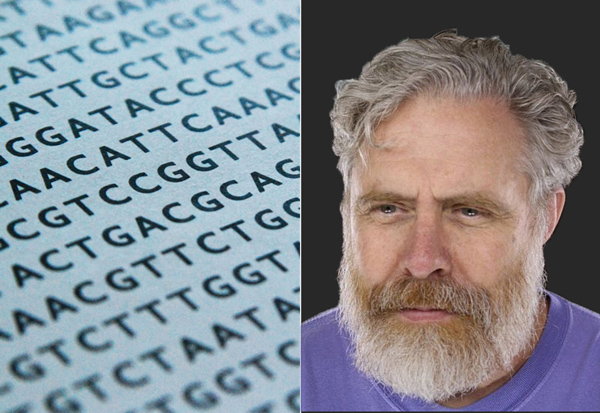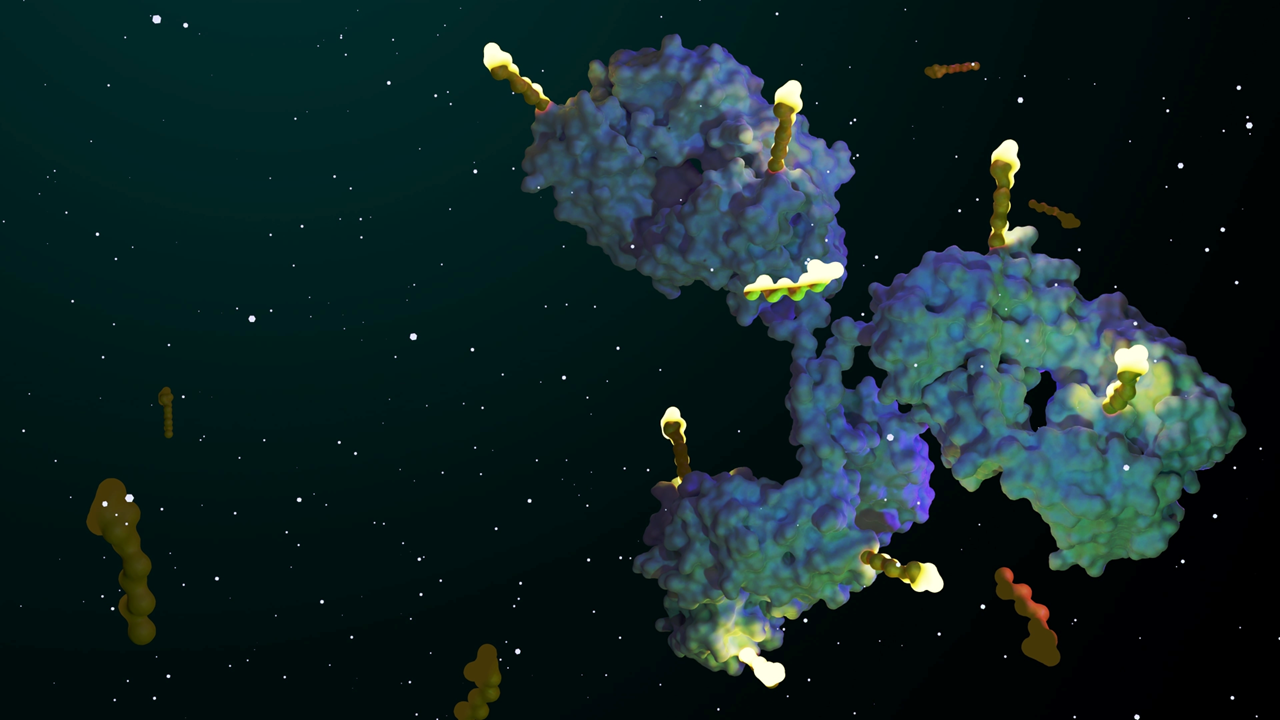Twenty-five years after the launch of the Human Genome Project – whose goal to sequence the entire DNA complement of a human cell was completed in 2003 – top researchers are setting their sights on an even more ambitious aim. The researchers, including George Church, a professor at Harvard Medical School, have begun discussing the feasibility of building an entire human genome using synthetic biology.
Last month, over 130 scientists, lawyers, government officials and other prominent individuals from around the world, met at Harvard University for a round-table on the topic of synthetic genomes. Conspicuously absent from the gathering were members of the media, who were not invited to the closed-door discussions.
According to Church, the meeting was originally intended to be an open discussion including journalists and other media professionals. Unfortunately, since the prestigious journal Science planned to publish a perspective piece on the results of the meeting, the editors issued an embargo which prevented the organizers from allowing members of the press into the meeting.
Dubbed the “Human Genome Project – Write” by Church and co-authors of the paper, the initiative has been called a logical next step following the completion of the original Human Genome Project. As the aim of the first Human Genome Project was to sequence, or “read”, the entire length of human DNA, this achievement has been renamed to the “Human Genome Project – Read.”
“The primary goal of Human Genome Project – Write is to reduce the costs of engineering and testing large (0.1 to 100 billion base pairs) genomes in cell lines by over 1000-fold within 10 years,” said the authors of the paper. They went on to say that $100 million in initial funding will be required to launch the program this year, with long-term costs being difficult to estimate. “The costs of the project lie not only in obtaining de novo synthesized DNA but in the assembly, integration, and functional assays required to evaluate and understand the modified genomes,” the authors continued.
Applications
The 10-year project could have wide-reaching applications in areas as diverse as drug discovery, disease research, and human organ generation, and could provide a better understanding of the human genome and its functions. It should also be noted that the participants in the Harvard meeting also discussed the possibility of building synthetic genomes for other species, including agronomically-important crops and human pathogens.
Creating a synthetic human genome could allow researchers to build cells that are resistant to all known viruses, or increase the number of copies of a tumor suppressor gene to prevent the cell line from turning cancerous. These resulting cell lines could be used to develop novel stem cell therapies, or could even act as a sustainable, cost-effective way to produce biologics like vaccines.
At its very basic level, the process of constructing a synthetic human genome would provide greater insight into gene regulation, evolutionary processes and the basis for genetic diseases. By putting a spotlight on the field of DNA synthesis, the Human Genome Project – Write could act as a catalyst to encourage technological advancements which will improve on current synthetic biology techniques.
History
Chemically-synthesized genomes have been built before; in 2010, DNA sequencing pioneer J. Craig Venter and his team created the first self-replicating, synthetic bacterial cell. A genetically-modified version of the Mycoplasma mycoides species of bacteria – named JCVI-syn1.0 – the cell was constructed as a proof-of-concept to show that a computer-designed, chemically-synthesized genome could be sufficient for a bacterial cell to grow and replicate.
In an effort to better understand which genes are truly necessary for life, the J. Craig Venter Institute researchers further pared-down the Mycoplasma mycoides JCVI-syn1.0 genome to include just under 500 total genes. Compared to the original synthetic bacteria which contained a single 1.08 million base pair chromosome, the JCVI-syn3.0 – the details of which were released earlier this year – contains over 50 percent less DNA at just 531,000 base pairs.
Interestingly, of the 473 total genes in the minimal bacterial genome, 149 genes have no known function. This realization highlights the massive gaps that still exist in our knowledge of gene function, and the DNA sequences that are necessary for life.
Synthetic DNA companies like Twist Bioscience are currently able to synthesize custom strands of DNA approximately 1,800 base pairs in length, however this technology will need to significantly improved before high-throughput synthesis of a human genome can be achieved. Current costs for DNA synthesis come in at approximately three cents per base pair, representing a significant cost reduction since 2003 when the cost was $4 per base.
Challenges
While the generation of a synthetic bacterial species represents a significant step forward in our understanding of genome functions and our ability to manipulate them using synthetic biology, fabrication of an entire human genome is another matter altogether. For starters, the human genome is magnitudes larger than most single-celled organisms.
The human genome is composed of 3 billion base pairs containing approximately 20,000 to 25,000 protein-coding genes spread over 23 chromosomes. What’s more, the human genome contains many more layers of complexity than the DNA sequence alone.
Epigenetic modifications – such as DNA methylation – alter the availability of certain DNA sequences, thereby enhancing or reducing their expression. Furthermore, the DNA in human cells is wrapped around specialized proteins known as histones, which provide a level of organization to the code and how genes are expressed. These additional levels of complexity outside the DNA sequence would likely prove challenging for researchers to replicate using synthetic methods.
Ethical Implications
As with many new biological technologies that have the potential to affect the basis of human life, the prospect of creating synthetic human genomes has faced significant opposition from bioethics organizations and individuals. While the organizers of the Human Genome Project – Read are quick to address these concerns by saying they do not plan to use the synthetic genomes to alter human reproductive cells – namely embryos – some are still concerned about the ethics of building a man-made genome.
In response to May’s closed-door meeting, Laurie Zoloth, professor of medical ethics and humanities at Northwestern University, Chicago, published an opinion piece in Cosmos Magazine. Co-authored with Cosmos contributor Drew Endy, Zoloth begins by admitting that while creation of a synthetic genome is still world’s away from creating a synthetic human, “the possibility of making a human cell, whose genome is realized from only digital information and raw materials, should trigger broader considerations.”
Zoloth acknowledges the potential benefits of creating a synthetic human genome, however she also highlights the potential negative consequences of such genetic manipulation. As an example, she touches on the possibility of modifying a genome to confer complete resistance to all known viruses – a perceived benefit of creating a synthetic genome. On the other side of the issue, Zoloth says this same tool could be used to create new designer viruses to which no one has ever been exposed, that are capable of bypassing the resistance built-in to a synthetic genome.
More ethical questions arise when considering the attendance at the closed-door Harvard meeting. So far the synthetic human genome proposal has only been discussed among a select few individuals, many of whom have commercial interests in synthetic genomes that could be patented. Though some have said that we will never fully understand the human genome until we can build it from the ground up, it’s important that we don’t lose sight of the public interest in such an ethically-controversial undertaking.
At the very heart of the ethical issue is the question of whether something should be done simply because it is within our capability to do so. While not inherently opposed to the idea of building a synthetic genome, Zoloth and others have been outspoken about the necessity to open such discussion to the public. As the ethical implications of undertaking such a project extend to all humans, the importance of including the potentially-critical voices of theologians, philosophers and ethicists in the debate is of the utmost importance.
As the Human Genome Project – Write is still in the very early stages, there are still many questions that need to be answered. Whose genome would act as a reference for the synthetic version be based upon? How could such a technology be regulated? Could existing guidelines, such as those for stem cell research, act as a framework for regulators? Much like its predecessor, the Human Genome Project – Read, this initiative is guaranteed to stimulate intense debate and with decades of research needed before any meaningful conclusions are reached.












Join or login to leave a comment
JOIN LOGIN